There is something about a splashy horse that people just love. It’s one of the reasons the Appaloosa horse has flourished since it was developed in North America. Horses of color have long been revered, but up until recently, getting a flashy foal was a matter of chance. Breeders would often breed their blanketed stallion expecting a carbon copy baby, only to be disappointed.
Now, thanks to DNA mapping, researchers have given us some of the keys to those superb spots on the Appaloosa horse.
What It Takes To Be An Appy
The Appaloosa Horse Club (ApHC) recognizes 13 base coat colors: bay, dark bay/brown, black, buckskin, grulla, dun, palomino, cremello/perlino, chestnut, gray, bay roan, blue roan, and red roan.
The following are representations of each color, reprinted by permission from the ApHC, with the exception of the Cremello/Perlino base coat.
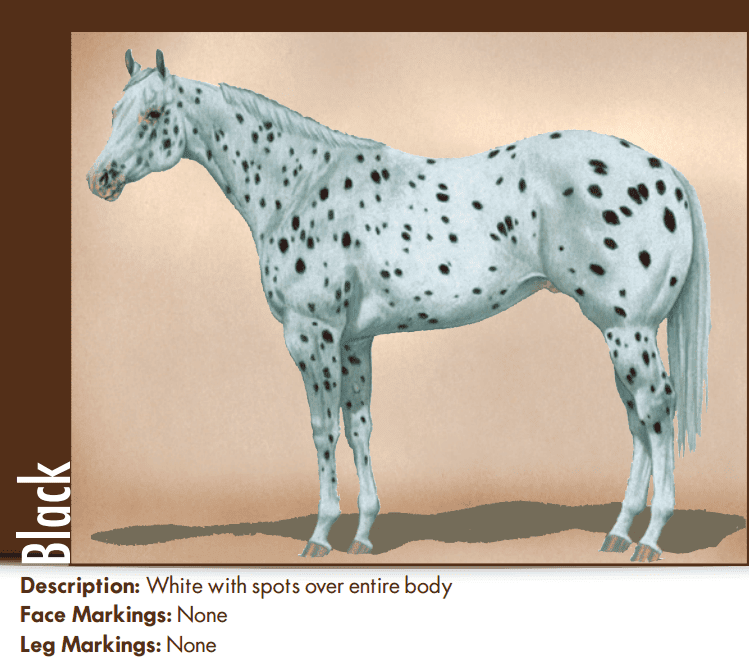
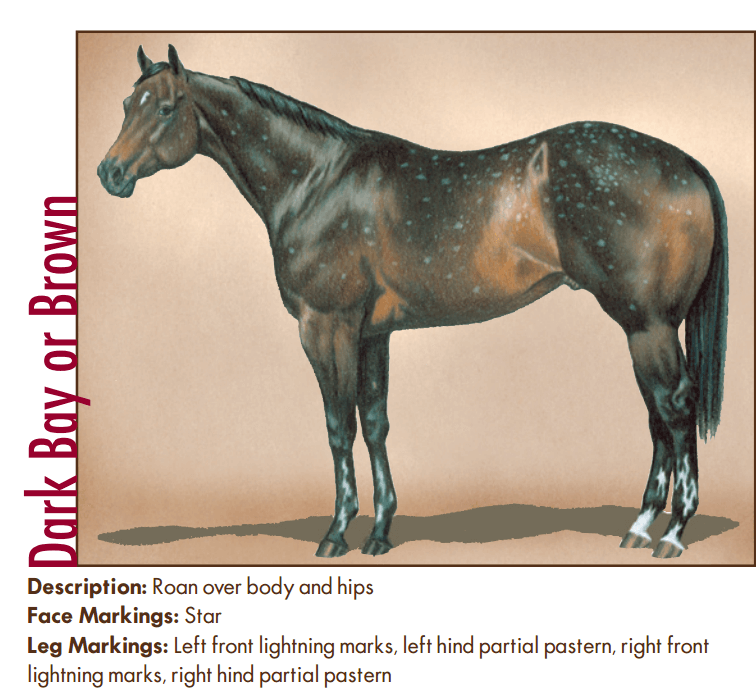
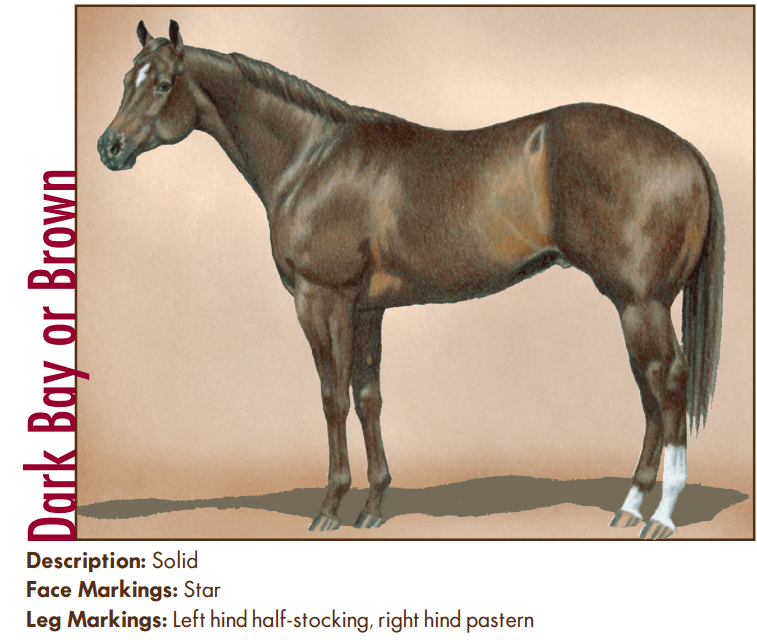
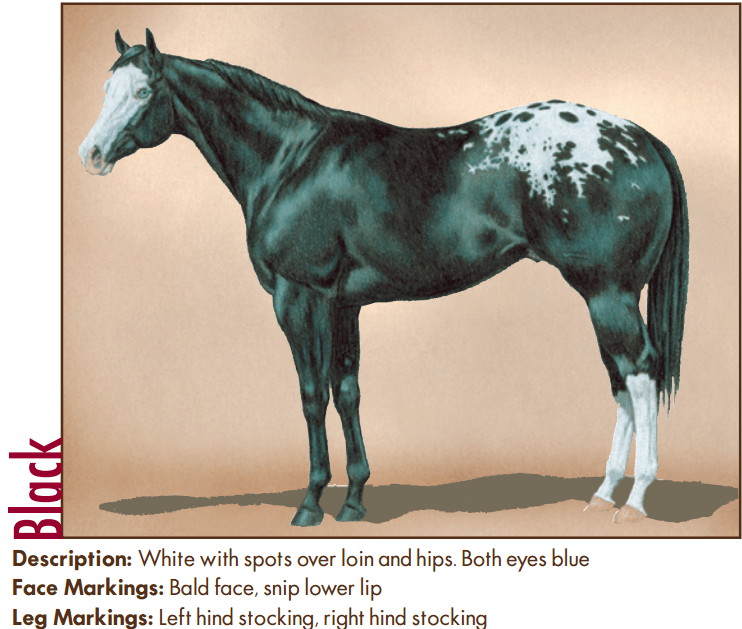
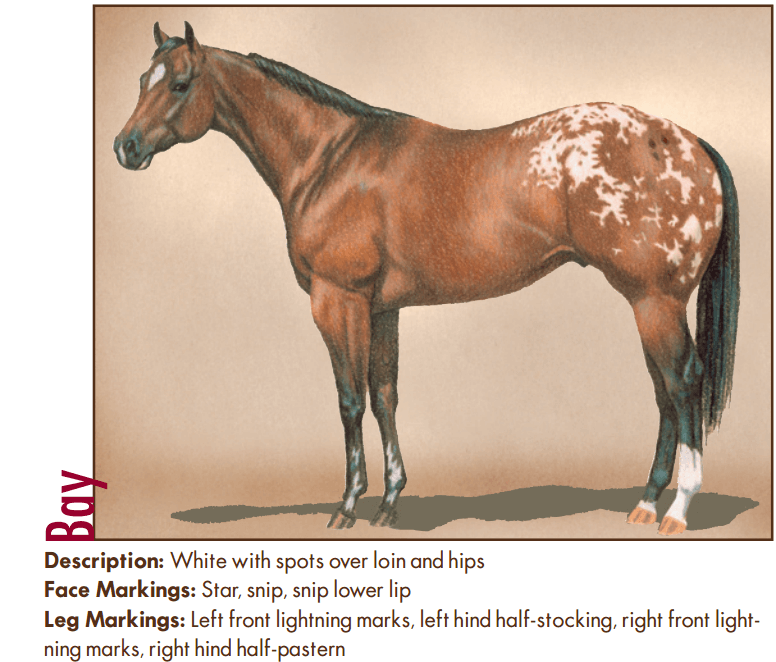
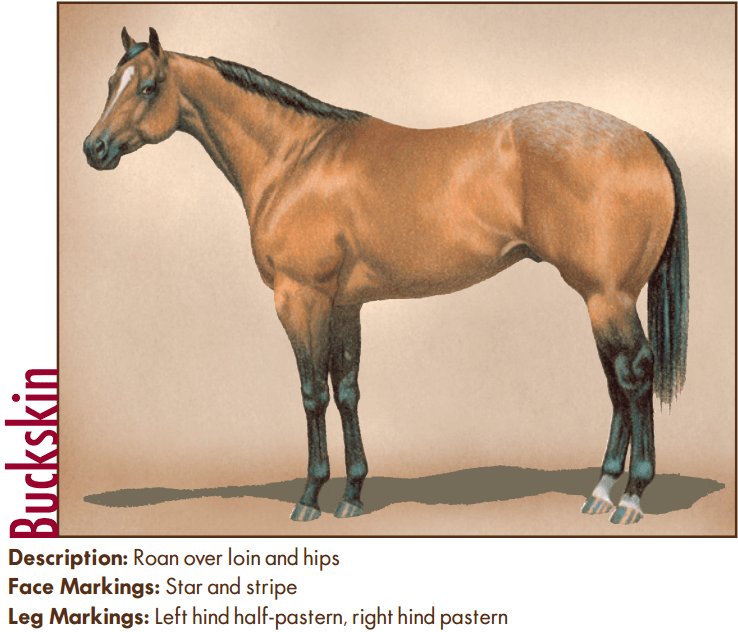
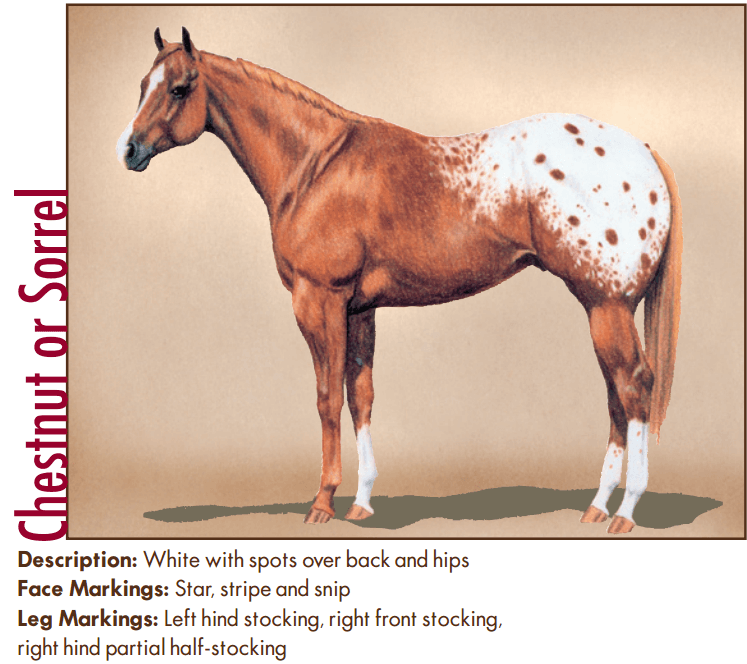
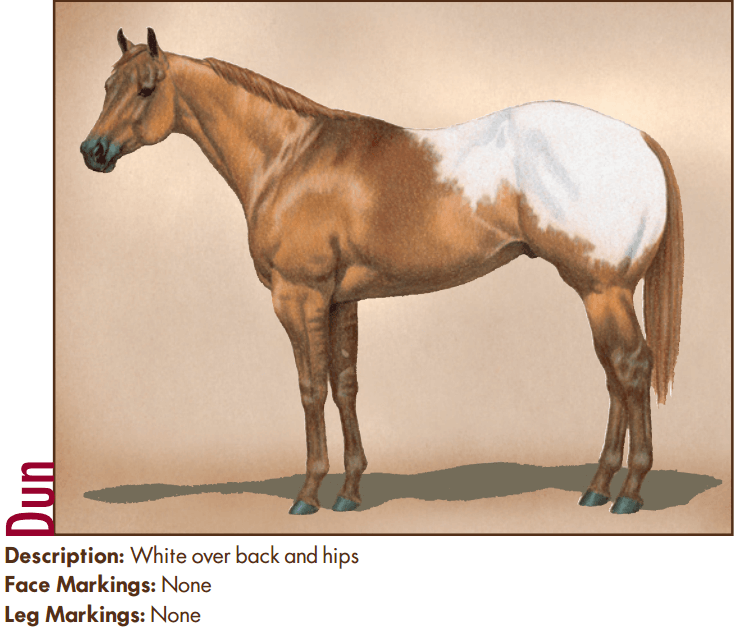
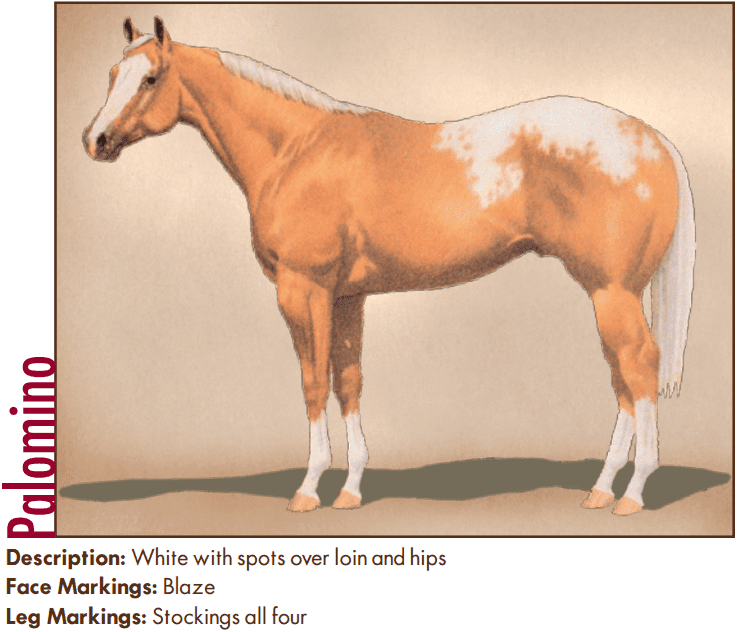

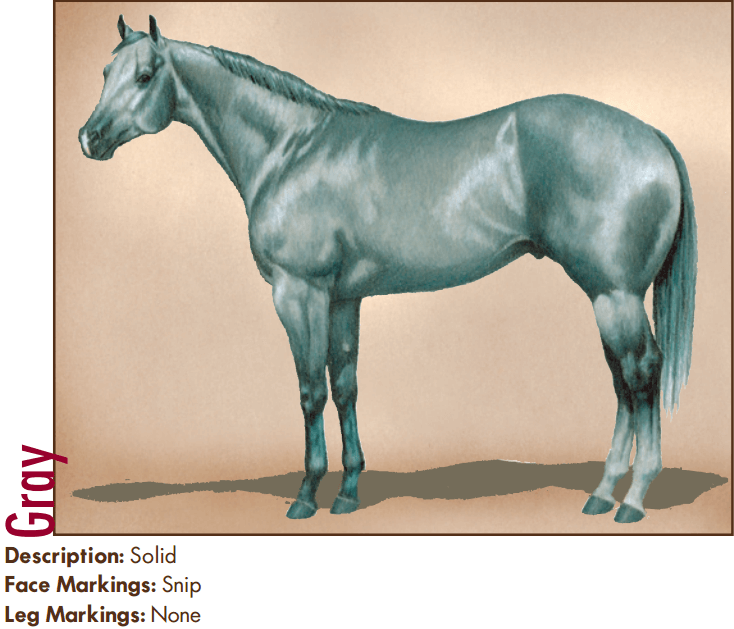
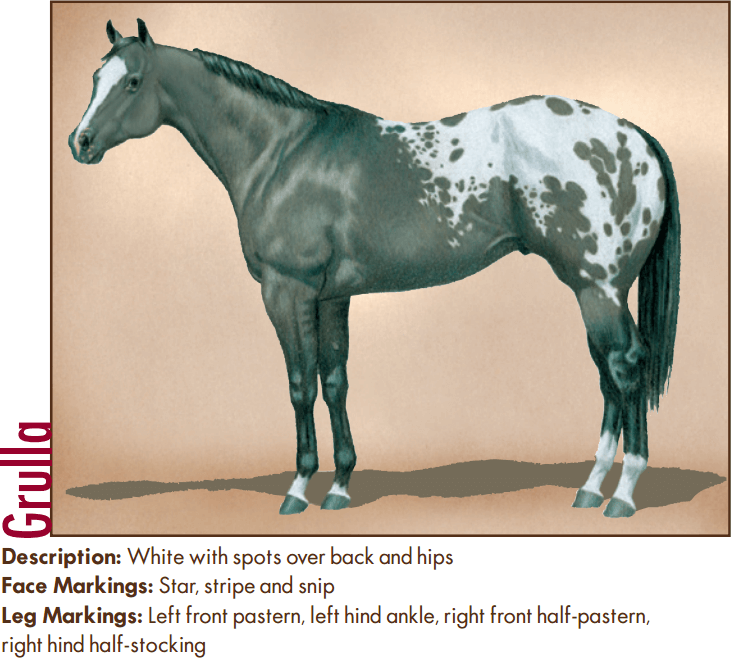
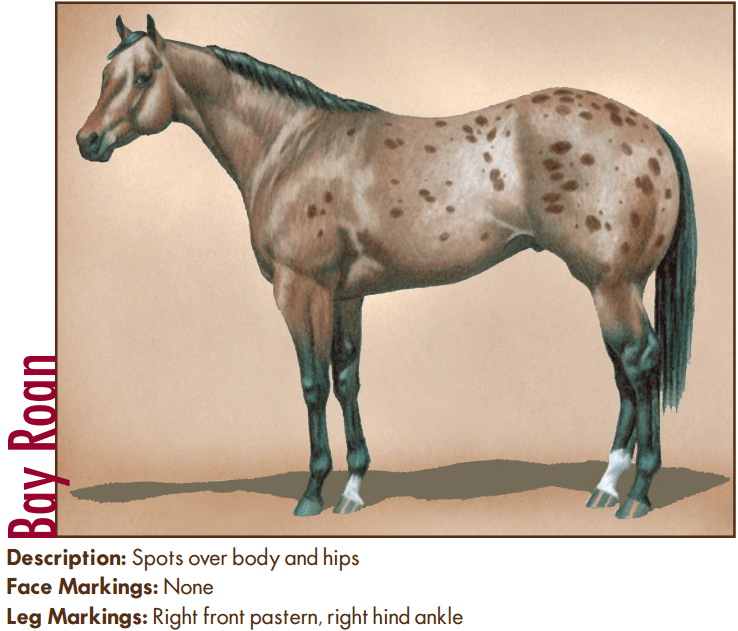
However, an Appaloosa horse does not actually have to be spotted to be considered an Appaloosa! It’s possible for two registered, spotted Appys to produce a solid foal, and the registry allows for this. According to their rulebook, these horses are designated by an “N” in front of their registration number and they must carry a performance permit in order to show in Appaloosa classes. If they carry the LP gene (more on that below!), they can be moved to regular registration.
Changing Spots
Since their coats can change over time, some owners may have to update their horse’s registration to reflect the horse’s new coloring. In fact, some foals born without white patterning can be moved from the aforementioned “N” classification into regular because they develop spotting (called Appaloosa roaning) as they age.
A leopard cat in the wild may not be able to change their spots, but these horses most certainly can!
Other Markings
Aside from white patterning, there are four other characteristics that Appaloosas can have.
Mottled skin – this is unique to the Appy breed and gives the look of spots of pink skin to dark areas or spots of dark to pink areas of the horse that are thin-skinned and relatively “hairless,” such as the muzzle, around the eye, under the tail, and the sheath or udder. This trait often increases with time, as more pigment is lost in these regions.
White sclera – in most horse breeds, you rarely see the sclera (white part around the iris), as in normally pigmented horses the region around the iris is brown. However in Appys, it is common for the sclera to be partially or completely white. Since white sclera can also occur on horse with extensive white face markings, this trait is not conclusive evidence that the LP mutation is present.
Striped hooves – another characteristic Appys with the LP mutation will display are striped hooves – vertical bands of alternating pigmented and unpigmented hoof material. This is not unique to the breed, however, since other coat color mutations (i.e. silver dapple) can produce this effect.
Appaloosa roan – a unique pattern of roaning that develops as the horse ages and is linked specifically to the LP gene (see below).
Too Much White
While you may think “the splashier the better,” The ApHC does limit the amount of white for registration. According to Ashleigh Brown, a representative for the Club, excess white is defined as:
Continuous leg markings above the top of the forearm or gaskin; white markings – splotches of white that are considered Paint or Pinto markings – behind the throatlatch area or behind the ears. If, for example a horse displays one big white spot (longer/wider than 6 inches) on its body and doesn’t have any other Appaloosa coat pattern, this would be considered “excess white.”
Spotting Genes
So just how do Appaloosas get their spots? It’s all in the genes! The Appaloosa Project is an international team of researchers that study the genes involved in how an Appy gets its coloring (and why that blanketed stallion can throw a solid foal!), as well as related traits.
The Appaloosa Project discovered the identity and location of the LP gene in 2013, after a decade of research. Sheila Archer, a member of the Project’s research team, explained to iHeartHorses that the LP gene is a mutation of a gene called TRPM1. This gene exists in all mammals, but only in the horse do we see the LP mutation, which when present causes changes in pigmentation of the coat, skin, sclera and hooves, and allows for the expression of white patterns.
A horse can be homozygous for the mutation (LP/LP), heterozygous for the mutation (LP/lp), or homozygous for the normal form of the gene (lp/lp). Crossing an LP/LP horse to an lp/lp horse will produce foals with one copy of LP every time (100% chance of a foal with LP). However, other crosses have much lower rates of success. This explains how the spotted blanket stallion mentioned at the beginning of this article (if he was LP/lp), could produce a solid foal if bred to a mare that was LP/lp (25% chance) or lp/lp (50% chance). In these examples, the foal is a true solid when it has inherited the normal form of the gene from both parents. For more information on the genetics of LP, check out this article on the Appaloosa Project’s educational website.
But the LP alone does not determine what an Appy’s coat pattern is like. Research has established that LP is incompletely dominant. This means that a horse with one copy looks significantly different from one that has two copies of LP. Areas of white patterning on LP/LP horses tend to have few or no spots, while white patterning on LP/lp horses tends to have numerous dark oval spots. However, at low white pattern levels, it is often not possible to determine whether a horse has one or two copies of LP – this is a good time to DNA test!
Once the LP gene is “On” (meaning the horse carries at least one copy of the LP mutation), it works in conjunction with a number of separately inherited modifiers called pattern genes (PATN) that create the beautiful coat patterns that are visible from birth.
The most significant of these that has been confirmed to exist through molecular research is PATN1. This is the essential ingredient needed for horses with LP to have very extensive white patterning – enough to cover most or all of the body in many cases. However, there are probably a large number of small effect PATN modifiers as well, though they have yet to be identified.
There must be at least one PATN gene of significant effect in addition to the LP mutation to get a patterned coat. If a horse has just inherited some PATN genes, and not LP, it will have none of the Appaloosa characteristics listed above nor any visible coat pattern, and will remain that way for life – it is a true solid, though one with the potential to pass on pattern-causing modifier genes to its offspring. If on the other hand the horse just has the LP mutation but no PATN genes, then you will see Appaloosa characteristics described above, but no coat pattern.
The following diagram shows the coat pattern range for horses with the LP gene. It is reprinted with permission from Sheila Archer and the Appaloosa Project:
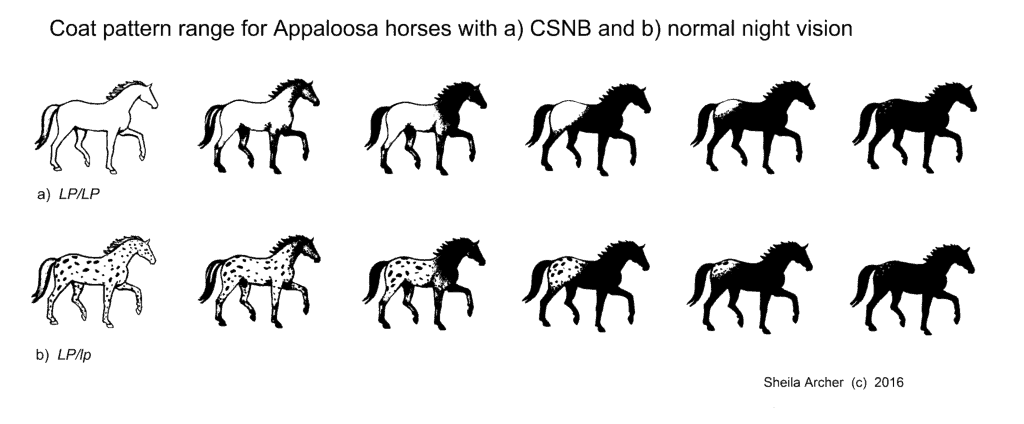
One of the downsides to the LP gene is that all horses that are homozygous for LP (LP/LP) are affected by a condition called Congenital Stationary Night Blindness, or CSNB.
“They are all affected to the same degree, and it’s present from birth,” Archer explained to iHeartHorses. “Below the light level you could comfortably read a book at, they see nothing at all.” By understanding this and making small changes to the horse’s living environment, it is easy to manage horses with CSNB. For more information on CSNB, please consult the free access articles on the Appaloosa Project’s educational website (insert links to articles here).
Other Breeds With Spots
There are several other breeds that also have the LP gene. According to the Appaloosa Project research, DNA testing has confirmed its presence in the following breeds:
- Knabstrupper
- Pony of the Americas
- British Spotted Pony
- American Miniature Horse
- Noriker
- Altai
- Kyrgyzstan
Since the LP mutation has been confirmed to have existed long ago in ancient horses of Europe, dating back at least 20,000 years, it appears likely that all living horses with LP trace back to a common ancient ancestor.
Future Research
Dr. Rebecca Bellone, chief molecular biologist for the Appaloosa Project let us know that the Appaloosa Project is far from being done! They are currently working on several projects, including:
- A genetic study to identify the genes contributing to the high incidence of equine recurrent uveitis in Appaloosas.
- Working to better understand how the LP and PATN1 mutations work on the molecular level to cause differences in pigmentation.
- Working to identify other genes that may contribute to the variation in the amount of white patterning in these horses.
You can learn more about these spotted beauties by visiting the ApHC website as well as The Appaloosa Project’s site.
Horse Courses by Elaine Heney
- Listening to the Horse - The Documentary by Elaine Heney & Grey Pony Films
- Shoulder In & Out Training for better balance, bend & topline development with your horse
- Over 110+ Polework Exercises & Challenges to Download
- Dancing at Liberty & Creating Connection with Your Horse (11 lessons) - Grey Pony Films
Want to learn more about appaloosas? Check out our popular article 8 Fun Facts About The Appaloosa
or watch our video on the IHeartHorses YouTube Channel!

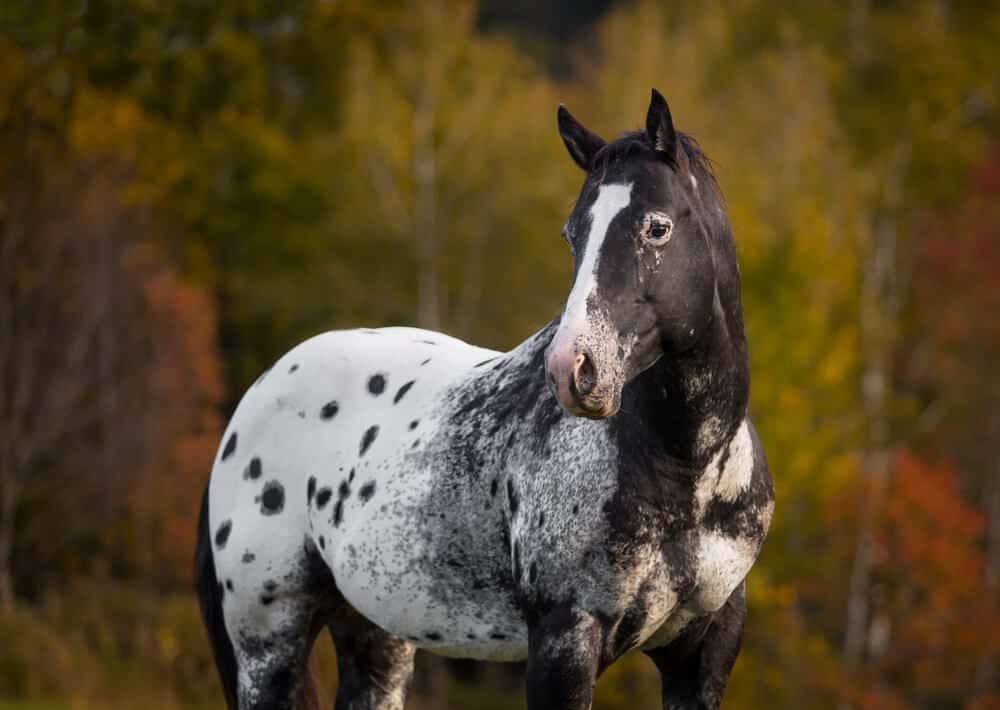
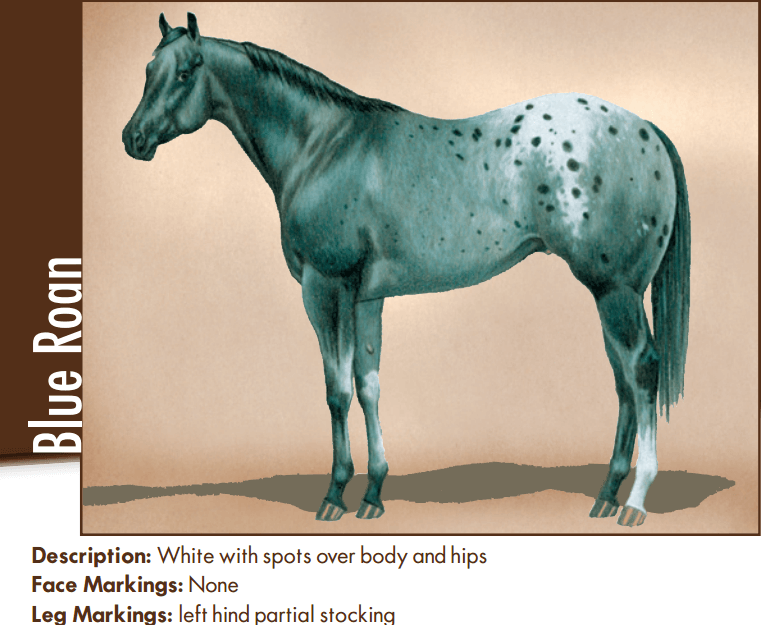

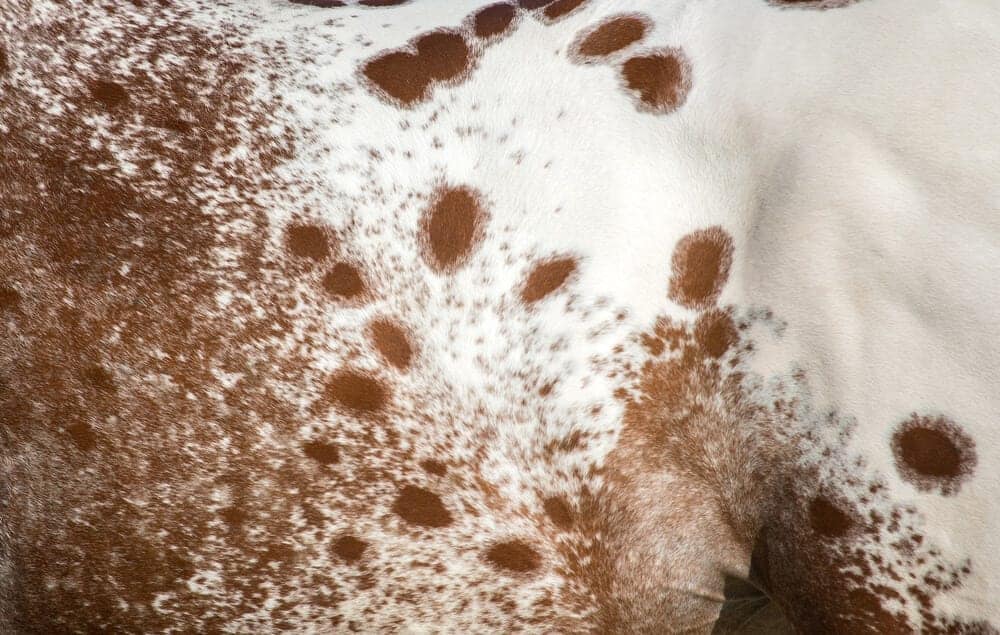
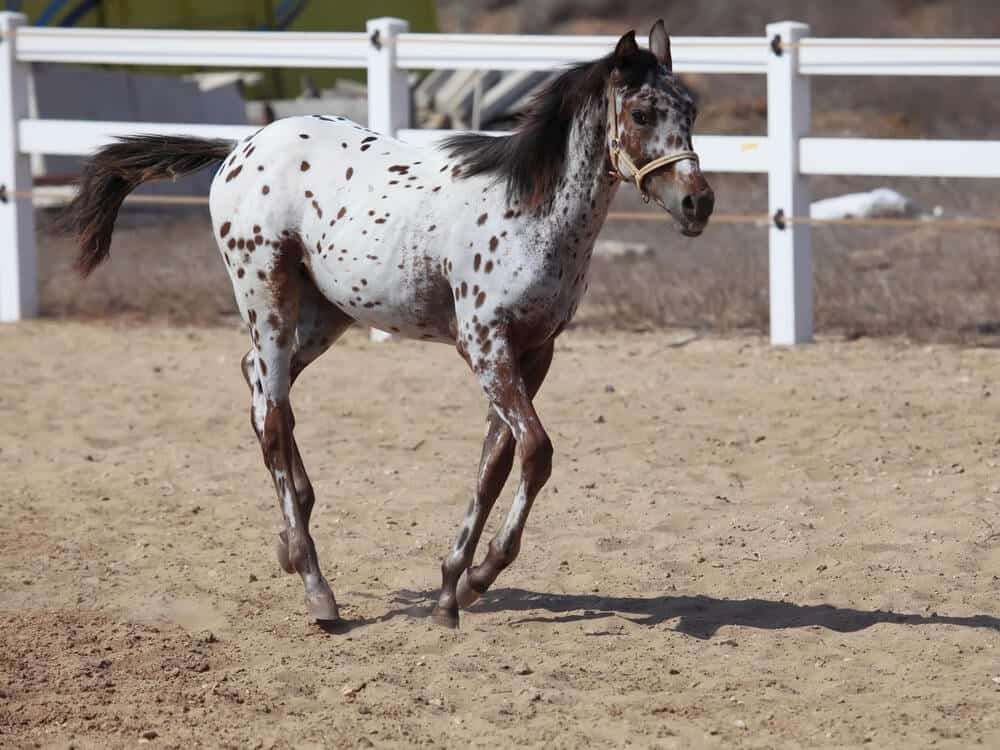
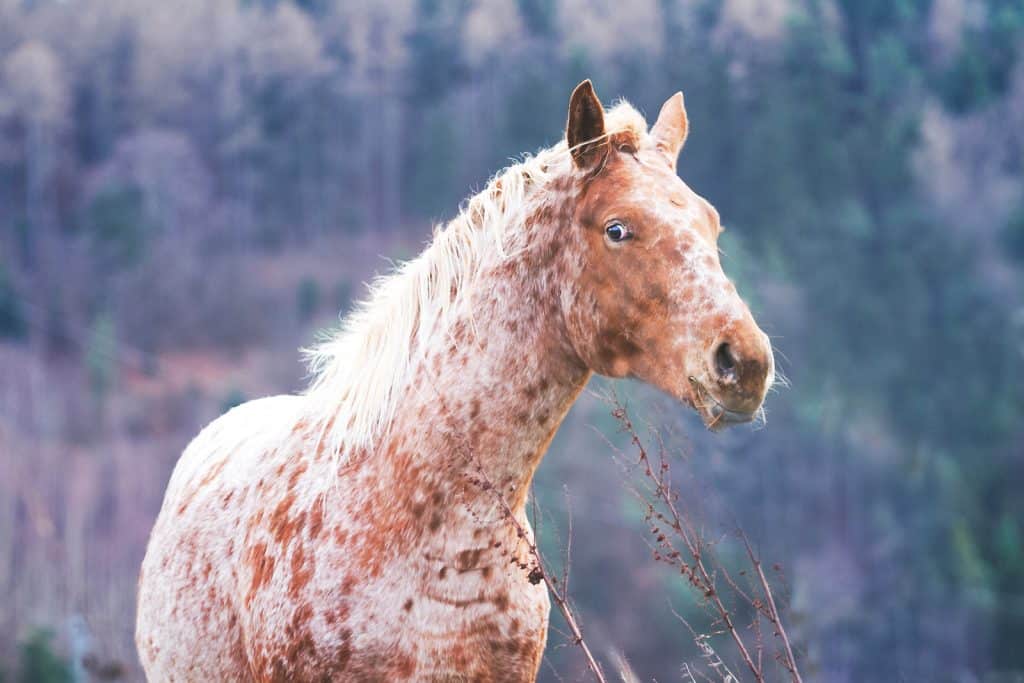

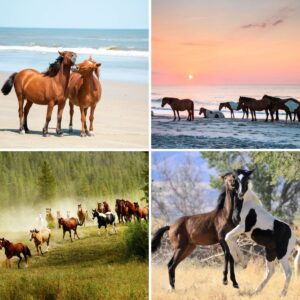

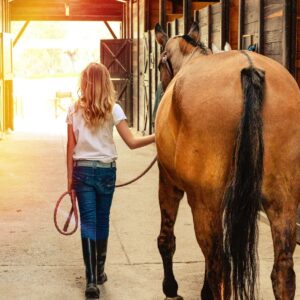
Leave a Reply